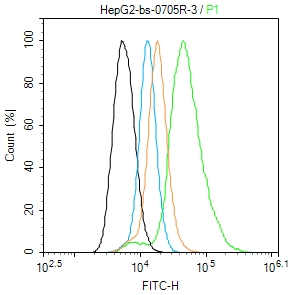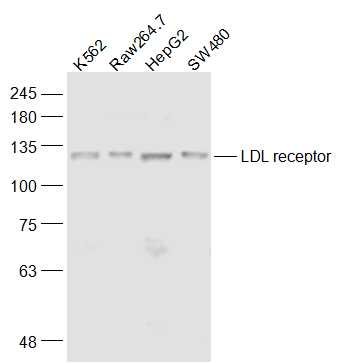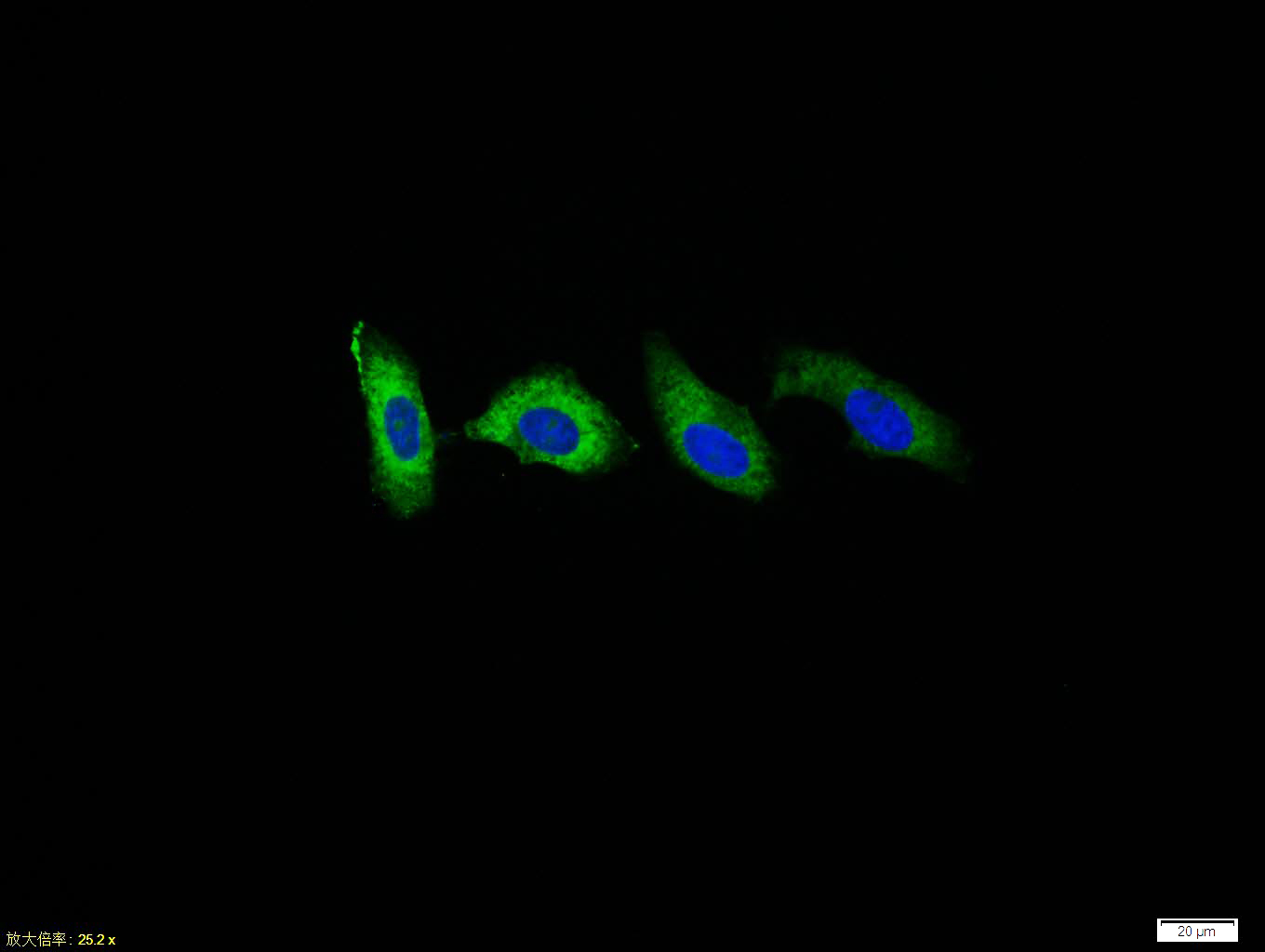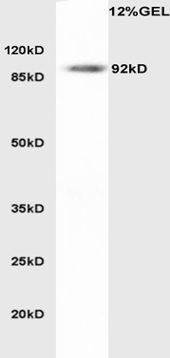
HepG2 cells(black) were fixed with 4% PFA for 10min at room temperature,permeabilized with 0.1% PBST for 20 min at room temperature, and incubated in 5% BSA blocking buffer for 30 min at room temperature. Cells were then stained with _x000D_ LDL receptor Polyclonal Antibody(bs-0705R)at 1:50 dilution in blocking buffer and incubated for 30 min at room temperature, washed twice with 2% BSA in PBS, followed by secondary antibody(blue) incubation for 40 min at room temperature. Acquisitions of 20,000 events were performed. Cells stained with primary antibody (green), and isotype control (orange).
LDLR Polyclonal Antibody
BS-0705R
ApplicationsFlow Cytometry, ImmunoFluorescence, Western Blot, ELISA, ImmunoHistoChemistry, ImmunoHistoChemistry Paraffin
Product group Antibodies
ReactivityBovine, Canine, Equine, Guinea Pig, Hamster, Human, Mouse, Porcine, Rabbit, Rat
TargetLDLR
Overview
- SupplierBioss
- Product NameLDLR Polyclonal Antibody
- Delivery Days Customer16
- ApplicationsFlow Cytometry, ImmunoFluorescence, Western Blot, ELISA, ImmunoHistoChemistry, ImmunoHistoChemistry Paraffin
- Applications SupplierWB(1:300-5000), ELISA(1:500-1000), FCM(1:20-100), IHC-P(1:200-400), IF(IHC-P)(1:50-200)
- CertificationResearch Use Only
- ClonalityPolyclonal
- Concentration1 ug/ul
- ConjugateUnconjugated
- Gene ID3949
- Target nameLDLR
- Target descriptionlow density lipoprotein receptor
- Target synonymsFH, FHC, FHCL1, LDLCQ2, low-density lipoprotein receptor, LDL receptor, low-density lipoprotein receptor class A domain-containing protein 3
- HostRabbit
- IsotypeIgG
- Protein IDP01130
- Protein NameLow-density lipoprotein receptor
- ReactivityBovine, Canine, Equine, Guinea Pig, Hamster, Human, Mouse, Porcine, Rabbit, Rat
- Storage Instruction-20°C
- UNSPSC12352203
References
- Saxena N, Kaur AP, Chandra NC. Differential Response of B Cells to an Immunogen, a Mitogen and a Chemical Carcinogen in a Mouse Model System. Asian Pac J Cancer Prev. 2018,19(1):81-90.Read this paper
- Grube L, Dellen R, Kruse F, et al. Mining the Secretome of C2C12 Muscle Cells: Data Dependent Experimental Approach To Analyze Protein Secretion Using Label-Free Quantification and Peptide Based Analysis. J Proteome Res. 2018,17(2):879-890. doi: 10.1021/acs.jproteome.7b00684Read this paper
- Jia L, Song N, Yang G, et al. Effects of Tanshinone IIA on the modulation of miR‑33a and the SREBP‑2/Pcsk9 signaling pathway in hyperlipidemic rats. Mol Med Rep. 2016,13(6):4627-35. doi: 10.3892/mmr.2016.5133Read this paper








